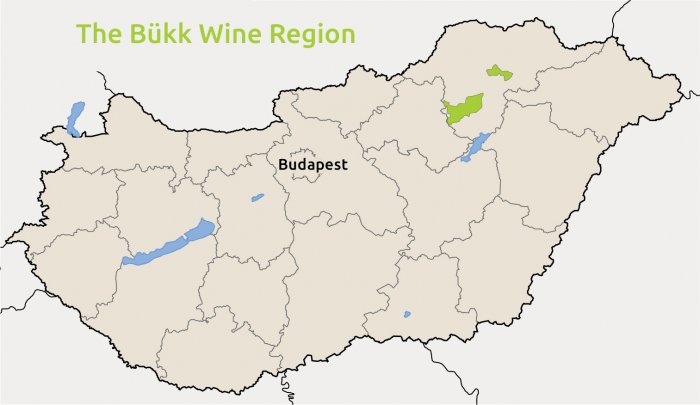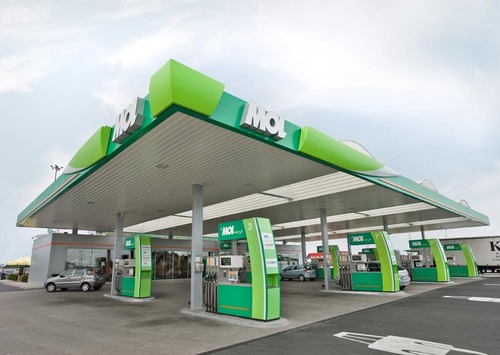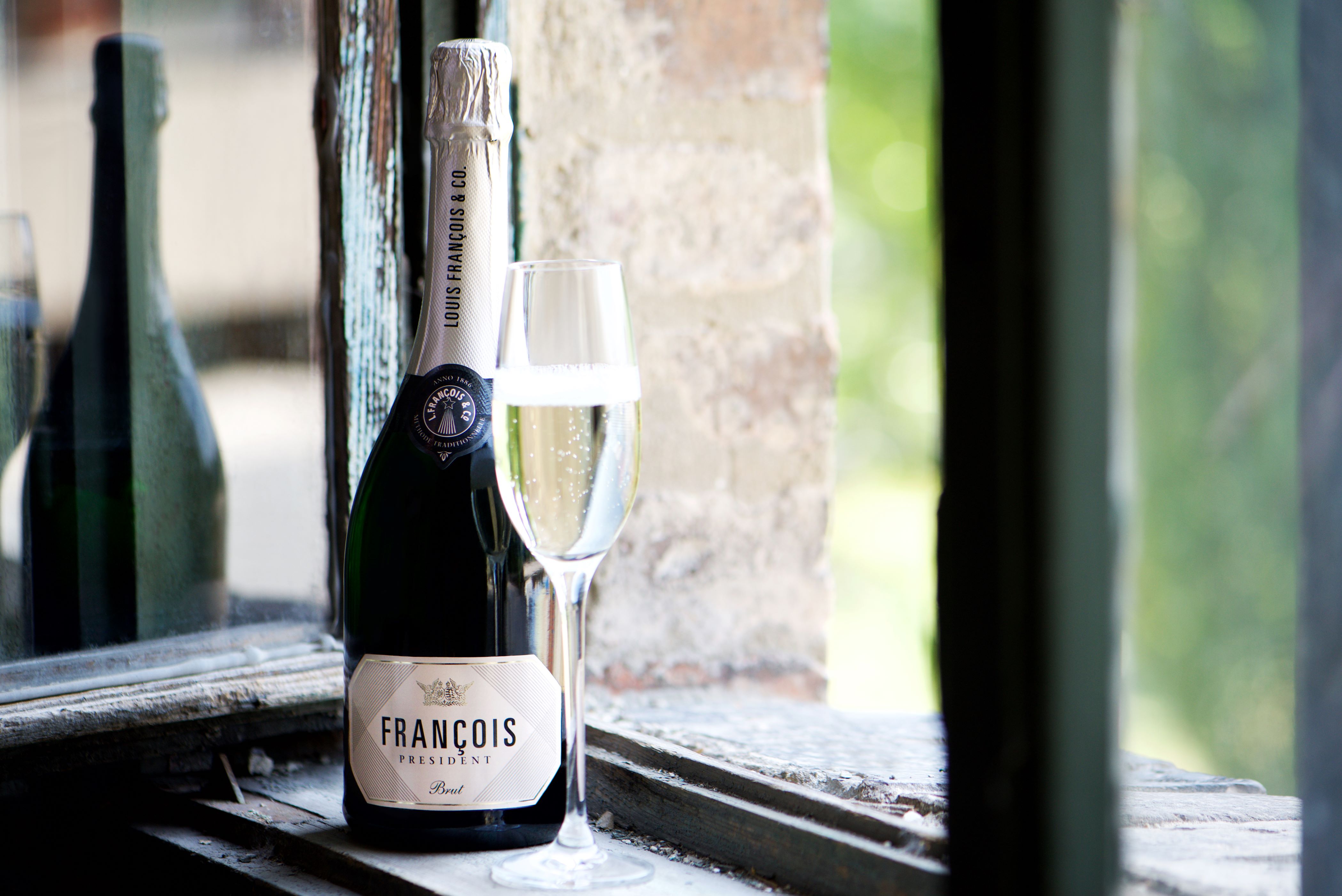Up and Coming Bükk Buckles Down

Wine columnist Robert Smyth luxuriated in a welcome chance to physically return to wine country last month, to witness a barely-known, and thus much less prestigious, region take great strides forward in a bid to establish itself as a producer of fine wines.
Almost two years ago, I enthusiastically reported on a talented band of winemakers in the Bükk region, making exciting wines that dramatically belied this northeastern region’s hitherto shaky reputation. Fast forward to today and the momentum of the Miskolc massive is building unabated.
On June 12, Roland Hajdú, president of Terroir Bükk, the wine association for the region, and Pál Veres, the Mayor of Miskolc, signed an agreement to get the region’s wines firmly established in the restaurants and bars of the city, as well as its popular environs, including Miskolctapolca, Diósgyőr and Lillafüred.
This may sound like an obvious move, but how can a wine region truly exist without the local wines being available to locals and visitors alike? Imagine not being able to find a selection of Bordeaux wines in a regular restaurant in the city of Bordeaux.
The mayor, a former schoolmaster who ran for office as an independent candidate, and who appeared to know his wine, noted that the Bükk had suffered even more than most wine regions from phylloxera (the vine-destroying louse which devastated European vineyards in the late 19th century), and worse still, from a subsequent lack of replanting.
The region today has a mere 900 hectares of land under vine, spread across 24 winemaking settlements. Yet, it offers vast winemaking potential and opportunities, according to Hajdú, who says that his association will help new investors to set up wineries in the region. “They will not see competition, but get assistance,” Hajdú promises.
The Terroir Bükk president, a winemaker himself, referred to the 400-point Szőlő termőhelyi kataszter (or Grape Growing Site Cadaster, a type of agricultural land registry), which evaluates the quality of each regions’ used and potential grape growing land divided into blocks; Bükk is listed in second place out of 22 wine regions with an average score of 332 points.
Value for Money
Hajdú added that only Balatonfüred-Csopak came higher, with an average score of 333, while Tokaj, widely considered Hungary’s greatest wine region, obtaining an average of 327 points. However, the price of Bükk land remains very cheap, adds Hajdú, who founded the association together with fellow vintners Zsolt Sándor (Sándor Zsolt Organikus Szőlőbirtok és Pincészet) and Roland Borbély (Gallay Pince).
On the sidelines of the event, held at the lovely Avasi Présház (itself a wine producer and a member of the association), Hajdú told me about a particular unplanted block in Bükk of 20 hectares that had a rating of 385 points on the cadaster, and was one-third the price of unplanted land in Tokaj.
He also mentioned the unlikelihood of finding 20 hectares of prime land in a single block elsewhere. Indeed, Bükk, with its broad range of soils and nicely positioned vineyards that gain ideal exposure to the sun for ripening, is something of a hidden treasure.
This region that for long sat silently, and all but forgotten, between the rather more famous and legendary regions of Eger (to the west) and Tokaj (to the east), was previously known in wine circles as a place to overlook, to put it mildly, for its paint-stripping and acid attack excuses for wines that were barely OK for quaffing in the heat of summer, but better in a fröccs (spritzer).
This turbo-charged acidity may, nevertheless, in future be considered a blessing rather than a curse, as rising temperatures comprise the ability of grapes to retain this all-important component of wine.
A number of boutique producers have learned to temper that tearaway acidity and are now turning out some rather fine and subtle stuff, which often strikes a balance between vibrant aromas, ripeness of fruit and zesty (not bitingly sharp) acidity.
Brand Launch
The Terroir Bükk event also witnessed the launch of the Bálvány brand, whereby individual winemakers make and release a white wine that represents the region’s best qualities. Balvány wines must all use the same combination of grapes (one third each of Chardonnay, Olaszrizling and Zenit), be made in stainless-steel tanks and be kept on the lees, and possibly stirred, the latter method being a great way to soften acidity and to add a touch of round creaminess to the wine.
Overall, Bálvány wines from six producers have made the grade from the 2019 vintage, and are all of a good standard and worth checking out; the 5,300 bottles are set to be distributed around the country.
The pick of the bunch for me were from Sándor Zsolt Organikus Szőlőbirtok és Pincészet and Gallay Pince. Sándor’s organic Bálvány 2019 has floral and citrus aromas, with a touch of yeastiness from the lees on the round, but still zesty palate. “Bükk acidity is special and not just high,” says Sándor.
The Bálvány wines are named after the highest peak in the Bükk mountains (956 meters), but is also the Hungarian word for a cult image. Sándor also showed that complex wine can be made from the Cserszegi fűszeres grape, with his spontaneously fermented and lengthily lees-aged (14 months) Lou Lee 2018 (HUF 5,500 from deminjohn.hu), which comes from the Csattos vineyard.
Gábor Galuska, formerly winemaker at Eger’s Gajdos Pince, which has recently been sold, makes his living as the head of a couple of wine communities and makes wine in Bükk “as a hobby” for his Palmetta pincészet.
Look out for Palmetta’s nicely crafted Olaszrizling Orange wine 2017, which was given 30 days of skin contact. The other three Bálvány wines come from Hajdú himself, Csáter Apó Pincéje (run by his brother Ádám Hajdu) and K.T. Kézműves Pince.
Grape Grounding
Zenit is a Hungarian grape that was created by Ferenc Király in 1951, when he crossed Ezerjó and Bouvier in Pécs, and is sometimes referred to as Badacsony 7, accordingly named after the wine region in which it was then developed. It is one of several grapes made by the crossing of these two varieties (the others being Zeus and Zengő). Local producers feel that Zenit is particularly well suited to Bükk, as is the Austrian Zweigelt grape for red. Gallay’s spicy, floral and zesty Nyékládháza 2016 (HUF 3,610 from Wineloverswebshop.hu) is a great example of what the Zenit grape can do in Bükk.

SUPPORT THE BUDAPEST BUSINESS JOURNAL
Producing journalism that is worthy of the name is a costly business. For 27 years, the publishers, editors and reporters of the Budapest Business Journal have striven to bring you business news that works, information that you can trust, that is factual, accurate and presented without fear or favor.
Newspaper organizations across the globe have struggled to find a business model that allows them to continue to excel, without compromising their ability to perform. Most recently, some have experimented with the idea of involving their most important stakeholders, their readers.
We would like to offer that same opportunity to our readers. We would like to invite you to help us deliver the quality business journalism you require. Hit our Support the BBJ button and you can choose the how much and how often you send us your contributions.








